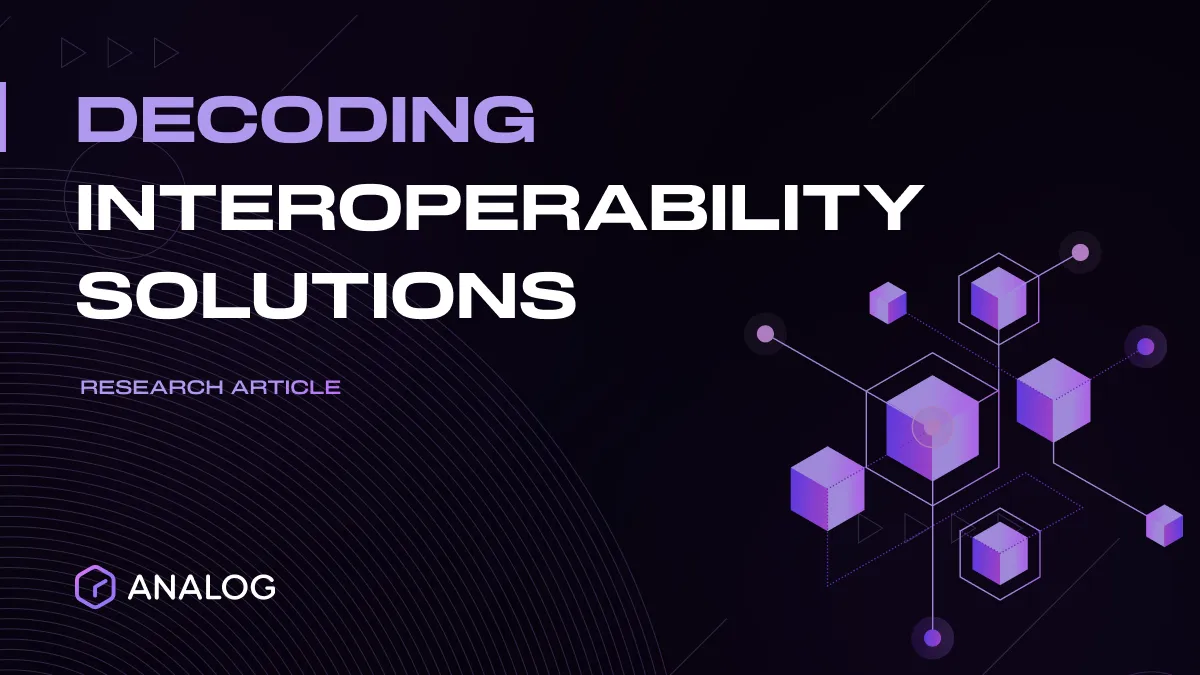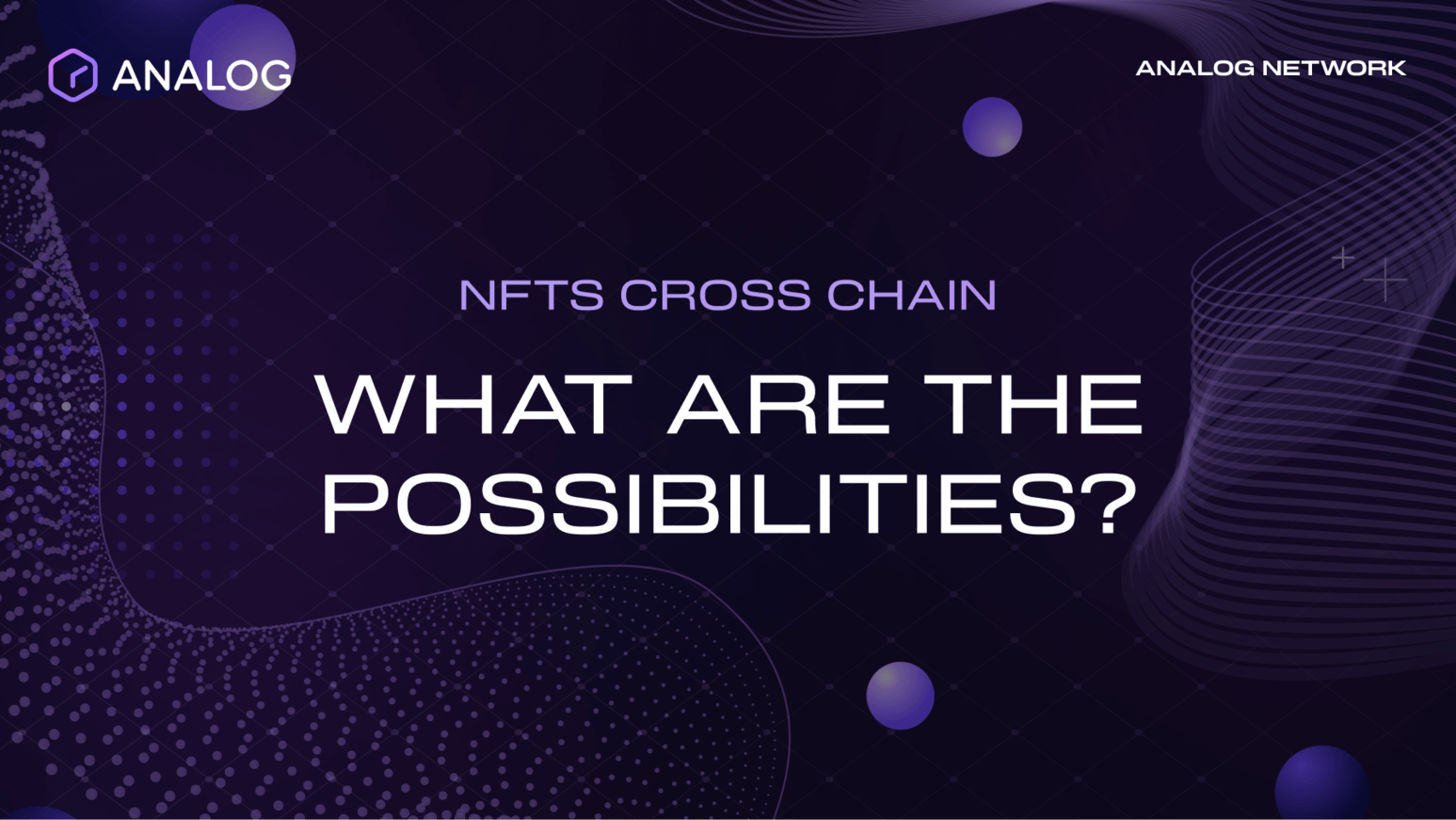
We have witnessed many blockchain networks emerging over the past couple of years, each with its own strengths and weaknesses. Some of these blockchains have different degrees of decentralization, security, throughput, or transaction fees. While this growth presents new opportunities for a wide range of use cases in various sectors, it also leads to an increasingly fragmented Web3 space since each blockchain operates in isolation.
Blockchain interoperability is required to move value between different chains in such a multi-chain environment. Theoretically, interoperability platforms should allow users, decentralized applications (DApps), and developers to operate on top of multiple blockchains, unlocking a wide range of functionalities in a multi-chain environment.
This article compares the different interoperability platforms, focusing on their significant features, strengths, and weaknesses. The article also discusses the architectural aspects that Analog — an omni-chain interoperability protocol for Web3 — considered while designing its Network.
Understanding blockchain interoperability
In the context of blockchains, interoperability is the ability of different blockchain networks to communicate. Cross-chain message passing is the foundation of blockchain interoperability that allows different chains to read data from and/or write data to other blockchains.
A cross-chain message passing protocol can allow you to build a cross-chain DApp, where a single, smart contract logic orchestrates various actions across multiple smart contracts on different blockchains. While “cross-chain DApps” and “multi-chain DApps” are sometimes used interchangeably, they do not mean the same thing.
With multi-chain DApps, you will need to deploy the same application on multiple blockchains, with each instance of the deployed DApp consisting of isolated smart contracts that do not have any connection to other chains. Multi-chain DApps give users more options when selecting which blockchain networks they want to use for a particular scenario.
For example, Uniswap was initially deployed on the Ethereum network to allow users to exchange ERC-20 tokens. It has since been deployed on other blockchain ecosystems, such as Polygon, BNB Smart Chain (BSC), Celo, and Optimism, with similar smart contracts deployed on these chains.
Unlike multi-chain DApps that do not share logic and liquidity across different chains, cross-chain DApps operate as single entities spanning multiple blockchains. Users can transfer generalized messages, such as data, tokens, and commands, between different on-chain environments.
For example, you can have a cross-chain lending protocol where users lend and borrow on different chains. Such a platform can, for example, allow users to borrow tokens on the Ethereum network and use them as liquidity on BSC by facilitating cross-chain transfer of borrowed tokens.
Review of selected interoperability platforms
In this section, we’ll discuss three essential interoperability players, why they fall short of delivering seamless cross-chain capabilities, and how Analog closes that gap.
Axelar
Axelar Network is an early example demonstrating the power of a cross-chain messaging protocol built on top of a sovereign chain. It provides a uniform cross-chain messaging solution — also called General Message Passing (GMP) protocol — that developers can leverage to connect to any supported chain without changing their DApp’s logic or UIs.Like Axelar, Analog Network’s GMP is also built on top of a sovereign chain — what we are calling the Timechain — with a diverse and distributed set of validators. In addition, both platforms provide a multi-layered security architecture incorporating threshold cryptography and consensus algorithm for the sovereign chain.
Analog Network provides a customizable security architecture, that allows DApp developers to select the number of validators they would like to participate in validating cross-chain transactions depending on the security requirements for their applications.
The Timechain also serves as a springboard for the Timegraph — a Web3 data infrastructure protocol that any user or application can query via an intuitive and simple-to-use API.
LayerZero
LayerZero is a ledger-less application layer protocol for facilitating cross-chain message delivery. The idea behind LayerZero is to enable the target network to verify that a given transaction or event has occurred on the source chain. The focus of the LayerZero protocol is reducing communication costs between the chains via an ultra-light client endpoint. Because it is ledger-less, the fundamental security assumption with LayerZero architecture is that the two parties in the architecture, i.e., oracles and relayers, do not collude.Hyperlane
Like LayerZero, Hyperlane uses a ledger-less approach in its cross-chain messaging solution. Whenever a cross-chain request gets submitted to the Hyperlane Network, its validators simply sign off on the messages, and their signatures are aggregated and propagated to the destination chain via relayers (also off-chain entities). Like LayerZero, the Hyperplane’s approach promotes flexibility because all validators do not need to be present on all the supported chains.
Comparative analysis
After analyzing the architectural designs and features of three cross-chain solutions, let us summarize their design trade-offs, core features, strengths, and weaknesses in a table. Flanking them in this comparative scenario are bridges — and what Analog will offer in the near future.
A key takeaway from this comparison is that no decentralized, chain-agnostic cross-chain solution built on top of a sovereign chain — that also powers Web3 data infrastructure capabilities — exists today within the interoperability space.

Closing thoughts
Blockchain interoperability is a critical component of Web3 infrastructure. It is essential for users and builders that want to securely (and seamlessly) move value and general messages from one chain to another. Without interoperability, the dream of buzzwords like composability is dead in the water.
However, in its current state, and as evidenced by this article, the interoperability space is still nascent, with many different architectural design choices that players are still experimenting with.
Analog is creating the building blocks for a multi-chain future. It combines cross-chain smart contract execution calls and Web3 data infrastructure capabilities, giving rise to an all-in-one platform that developers can leverage to interact with any supported chain. While cross-chain smart contract calls provide an asynchronous pattern for building cross-chain DApps, the Timegraph protocol allows developers to publish and query data from any supported chain.
Follow Analog on Twitter (@OneAnalog) and join the conversation on Telegram and Discord.












